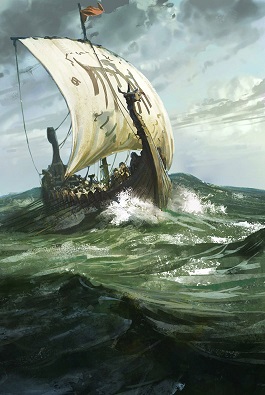There is not a lot of evidence that supports the Vikings using some form of calcite (Icelandic Spar's family of crystals) to navigate the storm-riddled Northern Atlantic, but there are a few accounts that lead to this speculation. The most common link to the Vikings would be the Norse legend "Rau˙lfs ■ßttr." The story, written around the 12th century, tells of Saint Olav's visit to Rau˙lfs magical rotating house. While there, the king requests Sigurur to locate the sun on an overcast day. After doing so, the king checks Sigururs accuracy with a "sˇlarstein"- a sunstone. Despite this being only a legend, it sounds as if the sunstone is a common tool used to find the sun during overcast days. The Hard Evidence The only "hard" evidence that has been found for the Sunstone being used as an ancient navigation device was found in a ship wreck dating back to 1592 located in the English Channel. The stone was found near several other navigational tools and could have been used as a backup for the fickle magnetic compass. Scientist found that the cannons on board could throw the compass off by as much as 100 degrees. The Icelandic Spar could be evidence that this ancient, ingenious tool was used by vikings to cross the open ocean and discover Greenland. The largest flaw in this idea, however, is the lack of stones. There have never been any found in viking ship wrecks or tombs. Some say that this could be because calcite is very susceptible to the elements and all of the viking sunstones have simply deteriorated into dust. But if these "sˇlarsteins" did exist, then how was it that the Vikings were able to use it to navigate hundreds of years ago? |
|
|
|
